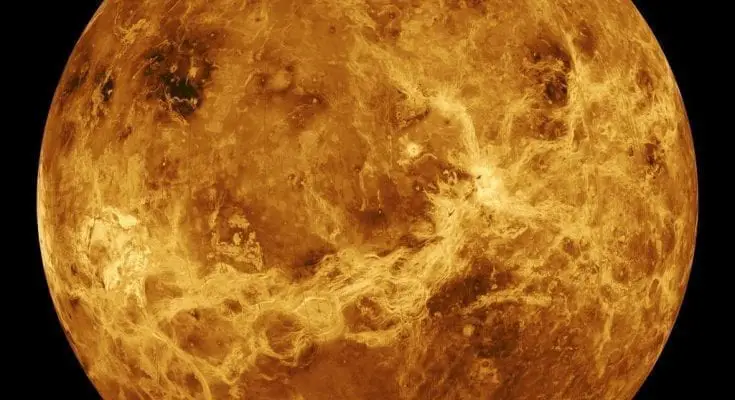5 Interesting Facts about Venus
What do you know about Venus other than that it is the second planet away from the sun in our solar system? Not much? Here are five interesting facts about Venus you probably didn’t know:
- Venus is the second brightest object in the Earth’s night sky
When you look up at the clear night sky, you can see Venus with your naked eyes. The only other object in the Earth’s night sky that is brighter is the moon. SMH, that is simply incredible!
- One day is longer than one year in Venus
It takes very long for Venus to complete one rotation on its axis (243 Earth days), while it takes 225 Earth days to complete one orbit around the sun. This technically makes one day in Venus longer than one year. TBH, that fact is very surprising to most.
- The direction of Venus’ rotation is the opposite to other planets
While most planets rotate in the direction of the sun, Venus rotates in the opposite direction, known as retrograde rotation.
- Venus is the hottest planet in our solar system
Venus is so hot that its average surface temperature is as high as 471-degree Celsius or 863-degree Fahrenheit.
- Venus is the only planet in our solar named after a female figure
The planet is named after Venus, the Roman goddess of love and beauty. You can see the beauty in Youtube videos, especially if you can get 4K HDR.
Venus is so cool and amazing, but there are also great conversation starters about other parts of our galaxy and places here on Earth. Check out the coldest city, tallest man, Florida, Belize Blue Hole, Caspian Sea, Atlantic Ocean, Pacific Ocean, Mount Pelee, Australia, China, Russia, Boston, Hollywood, New York, and more.
Fun Facts for Kids About Venus
If you are fascinated with the natural world of Venus, then you might be interested in learning some of the facts about this planet that will help you understand it a little better. Venus is a very unique planet as it is so close to the sun, yet has such a varied climate and size that it is hard to believe that it could exist without any kind of air or water to sustain life.
There are many facts about Venus that are related to the actual size of the planet and its rotation. The size of the planet is actually not the size of the largest, but the width of the rings around the planet. It is the diameter of the planet that makes it to be such a common figure in scientific terms, but most people have only ever heard of the width of the planet and the width of the rings. You can see these terms on almost every world that has been investigated by scientists.
One of the biggest facts about Venus is that it rotates at a very fast rate. Even though the rings around the planet may seem to circle the planet, they only measure about one thousandth of the planet’s size! When the scientists used a pendulum to make sure that the planet was spinning slowly enough for it to have a stable atmosphere, they found that the rings around the planet were rotating much faster than the planet itself!
The truth about Venus is that it rotates very fast, yet the atmosphere is extremely stable and not too hot to live in. However, it is important to understand that while Venus rotates very fast, the actual rotation rate is relatively slow. For example, if you could watch the planet from the surface of the planet you would see that the planet goes around the sun once every 26 Earth days, but the radius of the planet is almost four times that of the Earth.
A few facts about Venus is that it is so close to the sun that it does not require any other form of air to sustain life. Thereis nothing on the surface of the planet that provides anything like the atmosphere that is needed to keep water from evaporating or freezing into ice. Of course, the surface does not have any volcanoes or continents speak of, so we cannot be sure that there are no oceans deep below the surface, but it is still possible for life to exist on the surface.
Another fact about Venus is that the planet has a massive magnetic field that surrounds it. This field, which has not been studied to great detail, is thought to be about eight times stronger than Earth’s magnetic field. Scientists think that the reason that the planet has a strong magnetic field is that the inner core of the planet has a higher concentration of iron, magnesium, silicon, potassium, and sodium.
A few facts about Venus that is not well known is that the planet has a ring of sulphuric acid that forms on the surface. This sulphuric acid is about twenty-five miles across, and the reason that Venus has a strong magnetic field is because it is ringed with sulphuric acid. Another fact about Venus is that it has gravity that is so strong that it keeps the atmospheric pressure extremely low.
Some other facts about Venus that we know are correct is that the planet rotates very fast, yet it is not hot enough to cause volcanoes to erupt. Venus has no magnetic field, but since its surface has a high concentration of iron, the strength of the magnetic field is not enough to protect it from asteroid impacts. Most of all, Venus has no atmosphere of its own, but instead relies on hydrogen and helium to provide the atmosphere that we call ‘daylight’.
FAQ
How hot is Venus?
Venus is so hot that its average surface temperature is as high as 471-degree Celsius or 863-degree Fahrenheit.
How does Venus rotate?
While most planets rotate in the direction of the sun, Venus rotates in the opposite direction, known as retrograde rotation.
Can I See Venus?
When you look up at the clear night sky, you can see Venus with your naked eyes. The only other object in the Earth’s night sky that is brighter is the moon
Additional Resources:
Venus: University of Wisconsin
Black Hole
Galaxy
-- 728x90/300x250 -->


